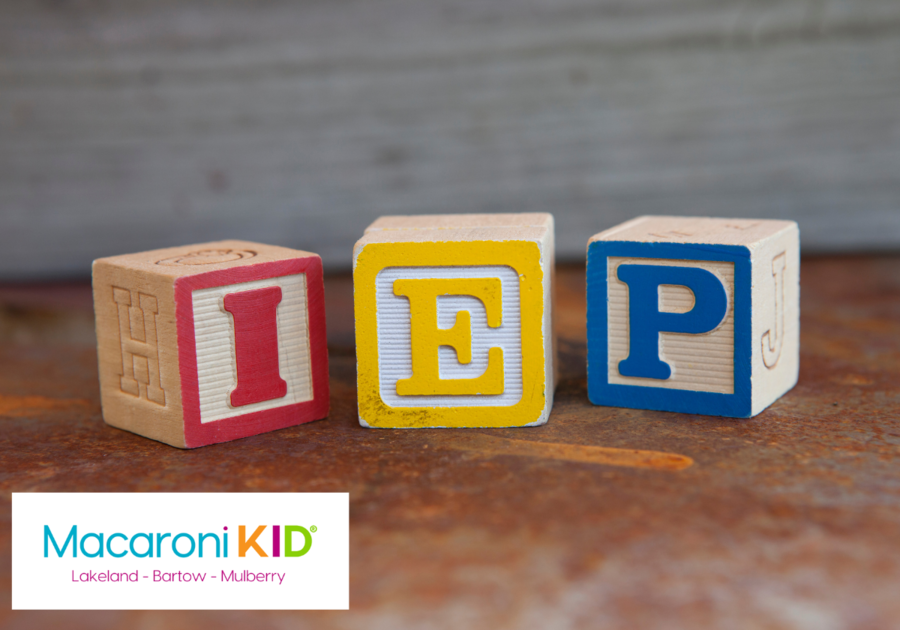Every student should have access to the resources and support they need to succeed in school. For students with disabilities, two crucial tools in this process are Individualized Education Programs (IEPs) and 504 Plans. While they both serve to provide accommodations and support, they do so in different ways and are governed by different laws. Understanding these distinctions is necessary for both educators and parents.
What is an IEP?
An Individualized Education Program (IEP) is a legally binding document developed for students who qualify for special education services under the Individuals with Disabilities Education Act (IDEA). This federal law mandates that students with disabilities receive a Free Appropriate Public Education (FAPE) tailored to their unique needs.
Key Features of an IEP:
- Eligibility: To qualify for an IEP, a student must have a disability that affects their educational performance and requires special education services. Disabilities include a wide range of conditions such as learning disabilities, autism, emotional disturbances, and more.
- Development: The IEP is developed through a collaborative process involving parents, teachers, school psychologists, and other relevant professionals. This team creates a detailed plan that includes specific educational goals and the services and accommodations necessary to achieve those goals.
- Content: An IEP includes several critical components:
- Present Levels of Performance: A detailed description of the student’s current abilities and challenges.
- Annual Goals: Specific and measurable objectives the student is expected to achieve within a year.
- Special Education Services: Details on the types of services (e.g., speech therapy, occupational therapy) and how they will be delivered.
- Accommodations and Modifications: Adjustments to teaching methods or materials to help the student access the curriculum.
- Assessment Participation: Information on how the student will participate in state and district-wide assessments.
- Review and Update: The IEP is reviewed annually (sometimes more often) to ensure it remains relevant to the student’s needs and progress. Adjustments are made as necessary to reflect changes in the student’s abilities or circumstances.
What is a 504 Plan?
A 504 Plan is designed to ensure that students with disabilities have equal access to education, but it is distinct from an IEP. It is named after Section 504 of the Rehabilitation Act of 1973, a federal civil rights law that prohibits discrimination based on disability.
Key Features of a 504 Plan:
- Eligibility: A 504 Plan is available to students who have a physical or mental impairment that substantially limits one or more major life activities (e.g., learning, walking, seeing). Unlike IEPs, 504 Plans are not limited to students who need special education services; they are more focused on providing accommodations within the general education setting.
- Development: The 504 Plan is created by a team that typically includes the student’s parents, teachers, and school administrators. This plan outlines specific accommodations or modifications needed to support the student in the regular classroom environment.
- Content: A 504 Plan may include:
- Accommodations: Changes in the classroom or testing environment, such as extended time on tests, preferential seating, or assistive technology.
- Services: Any necessary support services that are not considered special education but are needed for the student to access the curriculum.
- Review and Update: 504 Plans should be reviewed periodically to ensure they are meeting the student’s needs. Adjustments can be made to accommodate changes in the student’s condition or educational requirements.
Comparing IEPs and 504 Plans
While both IEPs and 504 Plans aim to support students with disabilities, they serve different purposes and involve different processes:
- Legal Framework: IEPs are governed by IDEA, which provides detailed regulations about the services and procedures involved. 504 Plans are governed by Section 504 of the Rehabilitation Act, which offers broader protections against discrimination but with less specific guidance on the delivery of services.
- Scope of Support: IEPs are more comprehensive and often involve specialized instruction and services, while 504 Plans generally focus on accommodations within the general education framework.
- Eligibility Criteria: To receive an IEP, a student must qualify for special education services. In contrast, a 504 Plan can be used for students who do not need special education but still require some form of accommodation to participate fully in school.
How to Get Your Child on an IEP or 504 Plan
Getting your child on an IEP or a 504 Plan involves several steps.
Recognize the Need
Before pursuing an IEP or 504 Plan, you should assess whether your child might need additional support:
- IEP: Your child may need an IEP if they have a disability that affects their ability to learn and requires specialized instruction.
- 504 Plan: Your child might need a 504 Plan if they have a disability that affects a major life activity, including learning, but they do not require specialized instruction. This plan is for students who need accommodations to access the general education curriculum.
Gather Documentation
Collect information and documentation that supports your child’s need for special education or accommodations. This can include:
- Medical Records: Documents from healthcare providers about your child’s condition.
- Educational Records: Report cards, assessments, and any previous evaluations.
- Teacher Observations: Notes or observations from your child’s teachers about their performance and behavior in school.
Request an Evaluation
IEP: Contact your child’s school and formally request an evaluation for special education services. This request can be made in writing and should be directed to the school's Special Education Coordinator or Case Manager.
504 Plan: Request a 504 evaluation by contacting the school’s 504 Coordinator or Principal. This request is also usually made in writing.
Steps to Request an Evaluation:
- Written Request: Send a written request to the school detailing your concerns and asking for an evaluation. Include any supporting documentation you have gathered.
- School Response: The school is required to respond to your request. For an IEP evaluation, they must respond within a specific timeframe. For a 504 evaluation, the timeline may vary, but schools typically aim to respond promptly.
Evaluation Process
IEP: If the school agrees to evaluate your child for an IEP, they will likely conduct a comprehensive assessment that may include:
- Educational Assessments: Tests and evaluations to understand your child’s academic abilities.
- Psychological Assessments: Evaluations to assess cognitive and emotional functioning.
- Observations: Observations of your child in different settings, such as the classroom.
504 Plan: For a 504 Plan, the evaluation might be less formal but should still assess whether your child’s disability impacts their learning and access to education. This could involve reviewing existing records and observations from teachers and other staff.
Review Evaluation Results
Once the evaluation is complete, the school will provide you with a report outlining the findings:
- IEP: If the evaluation determines that your child qualifies for special education services, an IEP meeting will be scheduled to create the plan.
- 504 Plan: If the evaluation indicates that your child requires accommodations, a 504 Plan meeting will be scheduled to develop the plan.
Develop the Plan
IEP: At the IEP meeting, the team—including you, the teacher, the school psychologist, and other professionals—will work together to create an Individualized Education Program tailored to your child’s needs. This plan will outline specific goals, services, accommodations, and modifications.
504 Plan: At the 504 meeting, the team will develop a plan that specifies the accommodations and modifications your child needs to succeed in the general education setting. This plan focuses on removing barriers to learning.
Implement the Plan
Once the IEP or 504 Plan is developed and agreed upon, it will be implemented in your child’s educational setting. You should verify regularly that the school is following the plan and providing the agreed-upon services and accommodations. Contact the school if changes in the plan need to be made.
Disclaimer: Some of the content in this article was created with the assistance of an AI.



